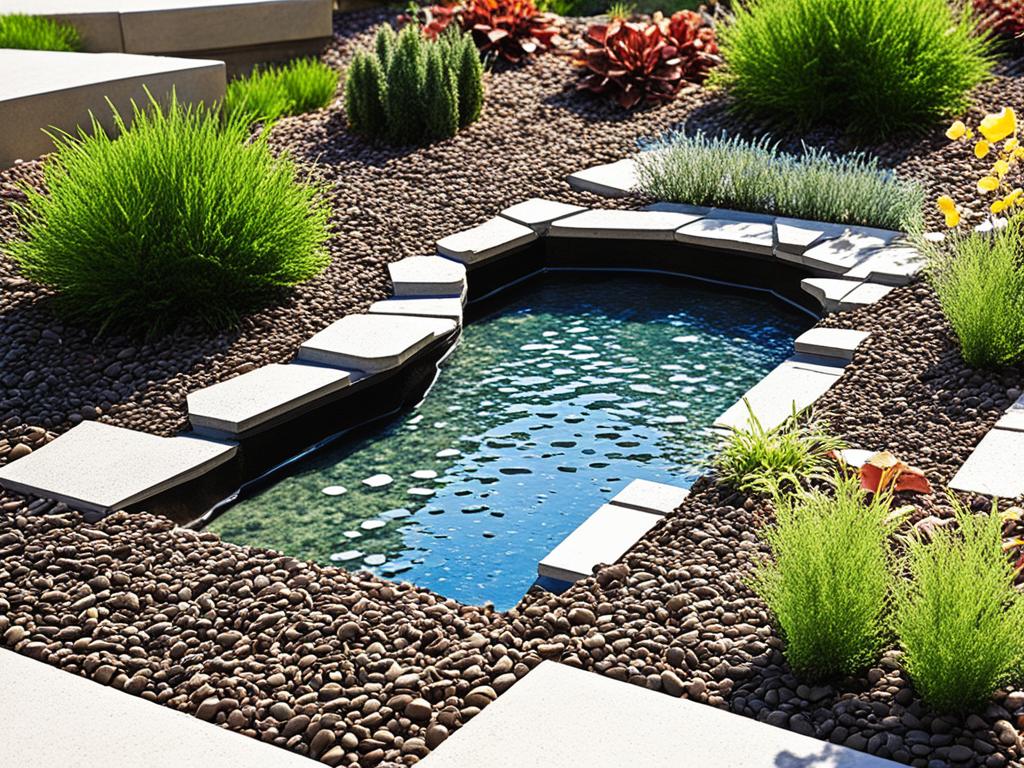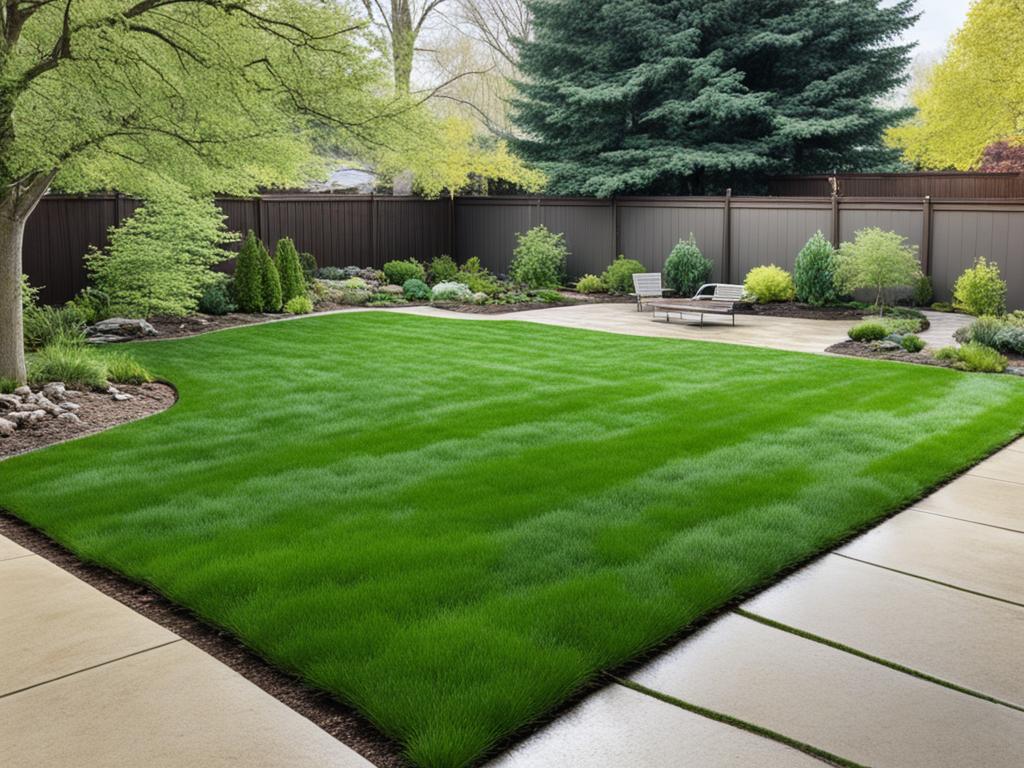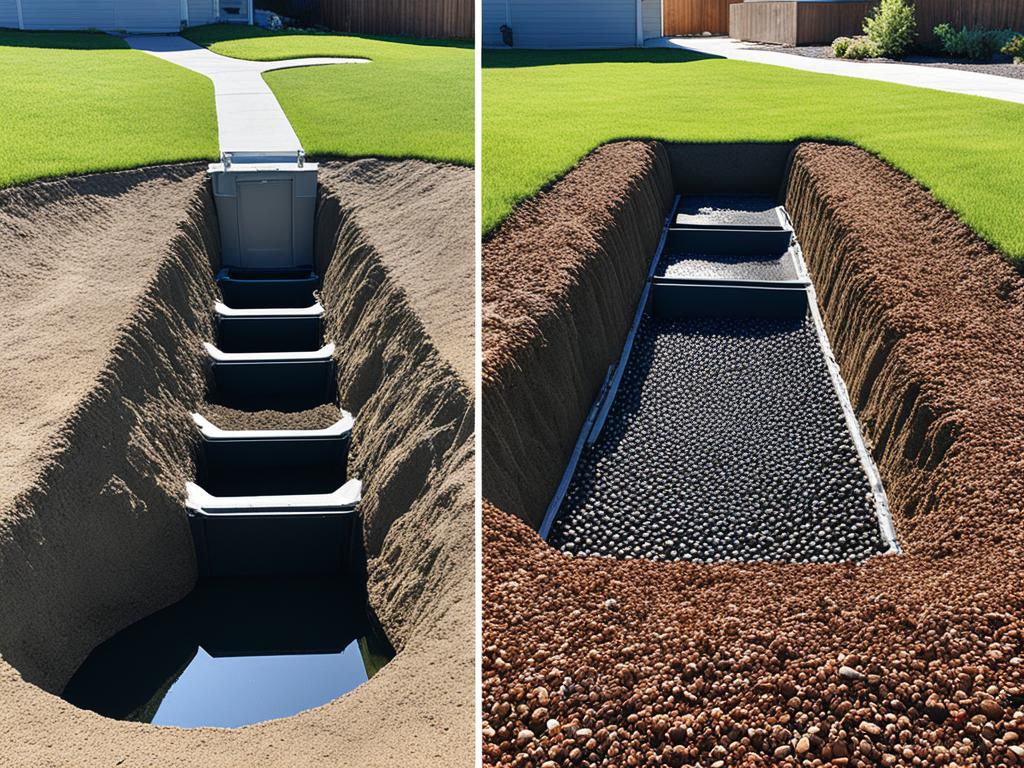Are you considering installing a septic system for your home? If so, it’s important to understand the differences between a seepage pit and a leach field. These two types of septic system solutions have distinct functions and installation requirements that can impact their effectiveness in managing wastewater. By comparing their features, you can make an informed decision about which option is best suited for your home.
A seepage pit, as the name suggests, is a lined hole in the ground that collects water and allows it to seep slowly into the surrounding soil. It is typically used for disposing of “clean” waste, such as water from showers, lavatories, bathtubs, and clothes washers. On the other hand, a leach field consists of a series of perforated pipes buried in the ground, which distribute the wastewater from a septic tank and allow it to filter through the soil.
When deciding between a seepage pit and a leach field, several factors should be considered. The type of waste being disposed of is an essential consideration. If you primarily generate “clean” waste, a seepage pit may be a suitable and cost-effective solution. However, if your wastewater contains a significant amount of solid waste or if local regulations prohibit the use of seepage pits, a leach field may be the better option.
Another factor to consider is the available space on your property. Seepage pits require a relatively small area, making them ideal for properties with limited space. On the other hand, leach fields require a larger area for the pipes to be buried and properly dispersed.
Installation and maintenance are also crucial considerations. Seepage pits are relatively straightforward to install, requiring only the digging of a hole and lining it. However, they do require regular maintenance to prevent clogging and ensure optimal functioning. Leach fields, on the other hand, require proper design and planning to ensure effective drainage. Regular maintenance, including inspections and proper waste disposal, is necessary to avoid problems such as clogs and saturated soil.
Key Takeaways:
- A seepage pit is a lined hole that collects and disperses “clean” waste slowly into the surrounding soil.
- A leach field consists of buried perforated pipes that distribute and filter wastewater.
- The choice between a seepage pit and a leach field depends on the type of waste, available space, and local regulations.
- Seepage pits are suitable for “clean” waste and may be more cost-effective, while leach fields handle larger volumes and solids.
- Proper installation and maintenance are crucial for both seepage pits and leach fields to ensure optimal functionality.
As you consider the best septic system solution for your home, consult with a septic system professional who can provide guidance based on your specific needs and property requirements. By weighing the pros and cons of seepage pits and leach fields, you can make an informed decision to ensure efficient wastewater management for years to come.
Types of Seepage Pits
When it comes to seepage pits, there are three main types commonly used in residential properties. Each type has its own construction requirements and considerations, offering different advantages depending on the specific needs of your home. Let’s take a closer look at these types:
Cylinder of Unmortared Blocks
A cylinder of unmortared blocks is one type of seepage pit that can be constructed using hollow-core masonry blocks or solid blocks with ample space between them for water seepage. This type of seepage pit allows for efficient water dispersal while providing structural stability.
Stone-Filled Dry Well
Another type of seepage pit is the stone-filled dry well, which is a hole completely filled with irregularly sized rocks. This type of pit is particularly suitable for absorbing small amounts of clean water. The rocks in the dry well allow for effective drainage and infiltration into the surrounding soil.
Drum of Precast Concrete Rings
The drum of precast concrete rings is a type of seepage pit made up of interlocking rings with tapered openings. These rings allow water to flow easily while preventing mud and gravel from entering the pit. The precast concrete rings provide a sturdy and durable solution for seepage pits.
Each type of seepage pit offers its own unique characteristics and benefits. Consider factors such as available space, local regulations, and the specific needs of your property when choosing the right type of seepage pit for your home.

Installation and Maintenance of Leach Fields
When it comes to leach field design and installation, proper planning is crucial. Several factors need to be considered, including soil conditions, slope, and distance from water sources. These considerations play a significant role in ensuring the efficient drainage of the septic system.
One of the key aspects of leach field design is the proper spacing and perforation of the pipes. The pipes should be carefully installed to ensure the even distribution of wastewater throughout the field. This facilitates the effective filtration of the wastewater as it percolates through the soil.
Regular maintenance is essential to keep the leach field functioning optimally. By avoiding excessive water usage, you can prevent overloading the system and minimize the risk of drainage problems. Proper disposal of household waste is also crucial to prevent clogs and system malfunctions.
Regular inspections are recommended to detect and address any issues with the leach field promptly. Signs of problems, such as slow drainage or odors, may indicate clogs or saturated soil. Timely maintenance and repairs can help prevent further damage and costly repairs.
By following these guidelines for leach field design, installation, and maintenance, you can ensure the longevity and effectiveness of your septic system.

Conclusion
In conclusion, when choosing between a seepage pit and a leach field for your septic system, it is important to consider the specific needs and factors of your property.
A seepage pit can be a cost-effective option for disposing of clean waste, but it is crucial to check local regulations to ensure its permissibility in your area. It offers benefits such as efficient water dispersion and absorption, making it suitable for certain cases.
On the other hand, a leach field requires proper design, installation, and maintenance to ensure effective drainage. It is important to address any problems promptly to prevent further damage and costly repairs. Regular inspections and adherence to maintenance guidelines are key to keeping the leach field functioning optimally.
Ultimately, consulting with a septic system professional and considering all the relevant factors will help you make an informed decision and choose the best septic system solution for your home. Whether it’s a seepage pit or a leach field, proper understanding, and proactive management will ensure the longevity and efficiency of your septic system.
